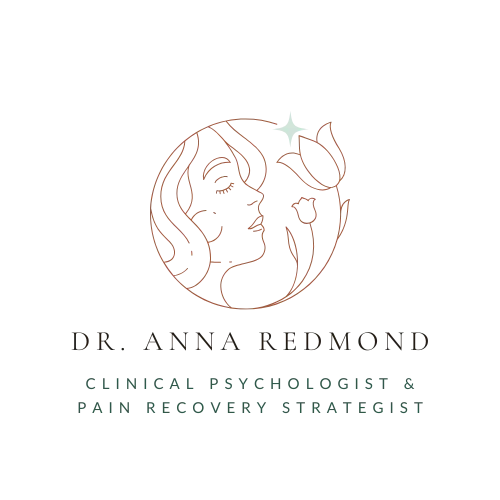Connect with me!
Tell me the number one thing that you want to understand about your pain?

Chronic pain is like… a doorbell.
Providers in the field of chronic pain have begun collecting and using analogies and metaphors to describe chronic pain. The use of creative language to explain complex medical phenomenon can help people with chronic pain understand it in a digestible, accessible way, decrease resistance to trying something new, and provides a new lens to shift preconceived notions about chronic pain.
You don’t have to dig too far in the research to learn that there is clear evidence demonstrating that providing patients with accurate knowledge about the biology of pain is associated with better tolerance for activity, reduced frequency of pain, improved functioning, and reduced catastrophizing (negative, worst-case scenario thinking).
To take this a step further, research also emerged showing that metaphors and stories are even more effective than standard education when it comes to helping people understand the complexity of how chronic pain works. Not only does it help people understand their pain and support forward momentum with the treatments that actually help, but it fosters the development of a provider-patient alliance that is strong and perceived as supportive by the patient.
Education is the inroad to helping patients understand the complexities and navigate the challenge in care that is inherent in chronic pain.
Consider this analogy:
Your body uses body language to communicate with you. Pain is like your body trying to tell you something in a foreign language, which is understandably difficult to understand at times. We don’t always understand what our body is trying to tell us. Chronic pain can sometimes be your body’s way of communicating to you that there’s another issue in your life (stress about work, being overwhelmed, family issues, or chronic worry about other things).
When you learn about pain and how the brain and body communicate, you can begin to learn the new language. When you can understand your body’s language, you can learn that the onset of pain is your body’s way of reminding you to pace, stay moderately active, check in with your stress level and take a breath, or that it’s being overprotective and we need to send messages of safety.
Pain education helps you learn this new language, so that you can listen to your body and communicate back to it.
Now consider this analogy:
Chronic pain is like a doorbell.
We can think of chronic pain of it the same way we would a doorbell that went haywire. How does a doorbell work? You press the button, the doorbell rings ones, alerts you to someone at your door. Case closed. Persistent pain, however, is similar to a doorbell that rings every house on your street, not once, but all day and all night (Tupper, 2012).
Usually an injury (or lots of different things) trigger our brain to decide to use pain to protect us - to protect us from harm by alerting us to pending danger. For example, the pain from breaking your arm keeps you from using that arm to prevent futher damage. Another example is the reflexive withdrawal of your hand from a hot stove to minimize burning.
Let’s say we have an injury. The body heals. Technically, the typical healing time for tissues in the body is 3-6 months. So when the original trigger for pain has ceased (or healed), and the pain signals/alarm continues to be transmitted, we can say we have a pain alarm that has gone haywire.
In chronic pain, or pain lasting longer than 6 months, pain has lost its protective function. It sticks around even if there is no danger (like a doorbell that goes off even if no one is at our front door).
Thinking of chronic pain as a doorbell is just one of the analogies we can use to describe this phenomenon.
I hope you are finding that the education here is doing just what I’ve described above. I hope that it helps decrease your fear, propels you forward, increases your confidence, and leaves you curious about your beautiful and amazing nervous system.
Education provides the power to take the next step in managing your pain. You want to do the things you enjoy (or even basic daily activities) without flaring up your pain. For a limited time, you can grab my free video tutorial to get you started:
3 Simple Steps to a Balanced Day... Without the Flare-Ups.
This free video tutorial is dedicated to helping women with pain begin to find confidence to return to the moments, activities, and people they love the most.
I hope you enjoy following along and don’t hesitate to DM me on instagram or email me at anna@drannaredmond.com with thoughts or comments!
© 2024 | Anna Redmond, LLC | drannaredmond.com
